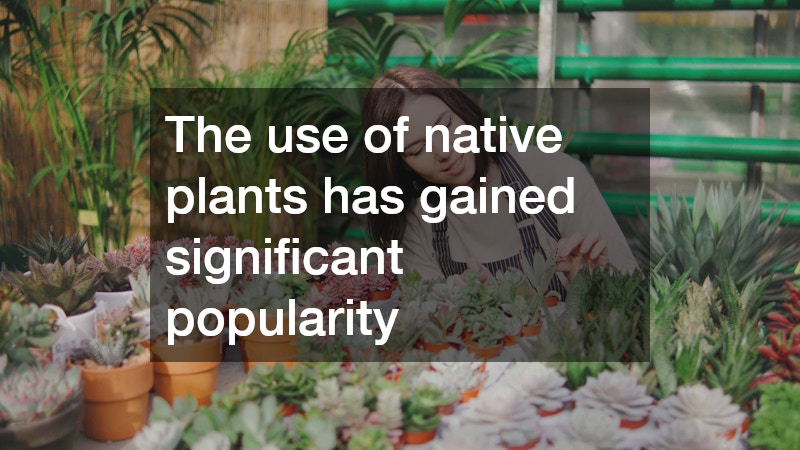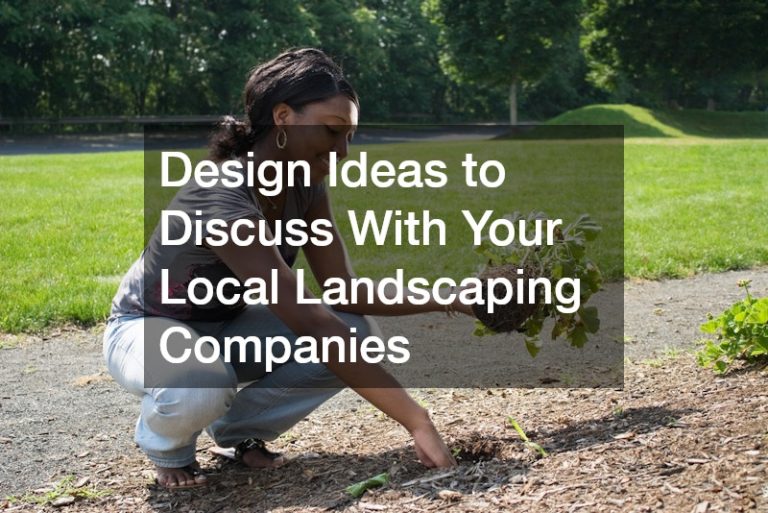Creating a personalized outdoor space is essential for enhancing the beauty and functionality of your home environment. By discussing design ideas with local landscaping companies, homeowners can tailor their landscapes to reflect their lifestyle, preferences, and the unique characteristics of their property. Consultations with professionals can ensure a harmonious blend of aesthetics, sustainability, and practicality, transforming any outdoor area into a personal oasis.
Trending Landscaping Design Ideas
One of the major trends in landscaping design is the shift towards sustainability. Homeowners are increasingly prioritizing environmentally friendly practices, reducing water usage, and selecting materials that have minimal impact on the environment. Sustainable landscaping not only benefits the planet but also enhances the resilience and longevity of outdoor spaces.
The use of native plants has gained significant popularity as well. Choosing plants that naturally thrive in the local climate and soil conditions reduces the need for fertilizers, pesticides, and excessive irrigation. Native plants provide a habitat for local wildlife, promoting biodiversity and ecological balance in residential gardens.
Advancements in technology have also paved the way for landscapes to become more interactive and efficient. Smart irrigation systems, landscape lighting, and automated maintenance have become integral components of modern landscaping. Such technologies allow homeowners to manage their outdoor spaces with precision and ease, ultimately contributing to a more sustainable environment.
Optimizing Your Outdoor Space for Functionality
Optimizing outdoor space for functionality requires thoughtful design that accommodates diverse activities and needs. Zoning is a key strategy where specific areas are designated for various functions, such as relaxation, dining, gardening, and play. By clearly defining these zones, homeowners can ensure that each area serves its intended purpose while maintaining cohesive aesthetics.
Creating multifunctional areas can drastically enhance the versatility of a landscape. For instance, a patio can be transformed into a dining space by adding a table and chairs or into a casual seating area by incorporating loungers and cushions. Designing flexible spaces allows for seamless transitions between different activities, adding value and enjoyment to outdoor living.
Vertical gardens are an excellent solution for space-constrained properties. These gardens utilize walls and vertical structures to grow plants, herbs, and even small vegetables. Vertical gardens not only maximize space but also add visual interest and texture to the landscape, creating a lush, green retreat even in urban settings where ground space may be limited.
Choosing the Best Plants for Your Region
Selecting the right plants is crucial for maintaining a thriving and low-maintenance landscape. Local climate, soil conditions, and the amount of sunlight and shade an area receives are all important factors to consider when choosing plants. Collaborating with local experts can help homeowners select species that are well-suited to their particular environment, ensuring lush and healthy growth.
Native species are often the best choice for regional planting. These plants have adapted to the local climate over time and require less maintenance compared to non-native species. Native plants are generally more resistant to local pests and diseases, reducing the need for chemical treatments and contributing to a sustainable landscape.
In addition to native plants, homeowners should consider drought-resistant varieties, especially in areas prone to dry spells. Many modern cultivars are bred with enhanced resilience and lower water needs, helping to conserve water and reduce overall maintenance efforts. Combining native and drought-resistant plants creates a landscape that is both beautiful and environmentally responsible.
Incorporating Water Features into Your Landscape Design
Water features can add a dynamic and soothing element to any landscape design. Ponds, with their ability to host aquatic plants and fish, create a tranquil and visually appealing focal point in a garden. They also contribute to local ecosystems by providing a habitat for various aquatic and terrestrial species.
Fountains are another popular choice, offering both auditory and visual appeal. The sound of flowing water adds a calming ambiance, and fountains can vary from modern designs to more traditional and ornate styles. They can be freestanding, wall-mounted, or pond-integrated, depending on the space and aesthetic preferences.
Waterfalls bring a sense of drama and movement to landscape designs. They can be integrated into rock gardens or flow into ponds, creating a naturalistic effect. Beyond aesthetics, water features can help cool the surrounding air, improve humidity levels, and support local wildlife, adding ecological value to the garden.
Discussing design ideas with local landscaping companies is crucial for creating a beautiful, functional, and sustainable outdoor space. By embracing modern trends, optimizing space for diverse functions, selecting the right plants, incorporating water features, and integrating sustainable practices, homeowners can enhance their landscapes in meaningful ways. Collaborating with local experts ensures that the design not only reflects personal style but also respects the unique environmental characteristics of the region, resulting in an outdoor area that is both visually appealing and ecologically sound.

